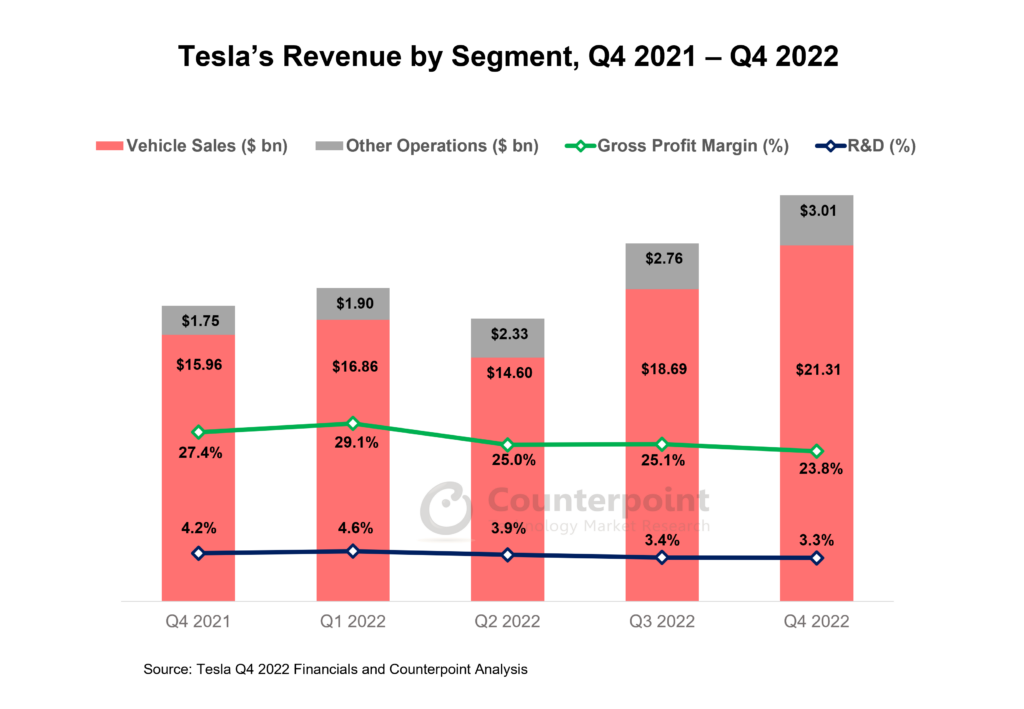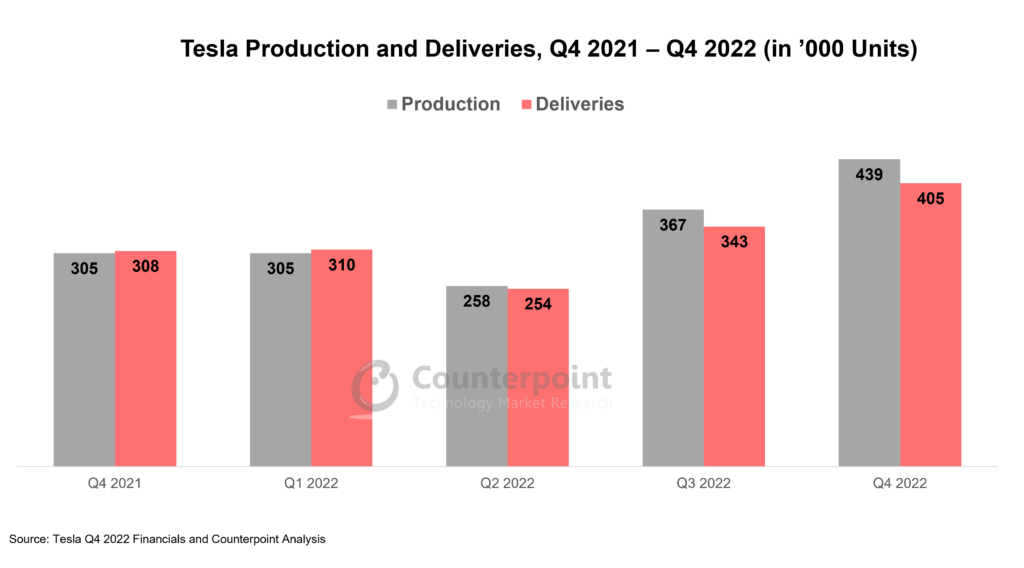- Revenue contribution from LACIS, EMEA and APAC regions drop YoY in H1 2023.
- Revenue contribution from APAC region should improve in H2 2023 with India and SEA’s strengthening performances.
- PAX expects a double-digit percentage decline in 2023 revenue.
PAX Global Technology’s H1 2023 revenue fell 14.7% YoY to$456 million, as the company’s electronic payment terminal business was constrained by slowing global economic growth and high-interest rates. Meanwhile, revenue from itspaymentterminal-related services segment surged 35.6% YoY during the period, mainly due to the growth in revenue generated from the Software as a Service (SaaS) solutions, maintenance, and installation services.

During PAX’s earnings call, CEO Jack Lu discussed a few key topics including the adoption of Android smart solutions, macroeconomic challenges and forward-going management strategies.
Macroeconomic Situation and Payment Trend
CEO Jack Lu:“Despite short-term macroeconomic challenges, the proliferation of electronic payments continues to be a significant and ongoing global trend. The continued advancement of payment technology, along with growing consumer appetite for convenient and secure payment options, as well as the cashless initiatives promoted by governments worldwide, have continued to open up new opportunities for PAX solutions.”
Our analyst take:“PAX’s strong portfolio across different sectors, combined with its POS terminal management platform, offers a one-stop solution for businesses. PAX is helping businesses scale their operations by providing seamless payment options. The company has strategically set up a dedicated division called Zolon to expand businessInternetof Things (BIoT). PAX’s service segment revenue is expected to receive a further boost from its BIoT solutions, including SaaS (e.g. MAXSTORE) and commercial POS solutions (e.g. Elys). The enterprise IoT solution will mainly target cloud-based services for businesses to secure recurring revenues.”
Management Strategy
CEO Jack Lu:“Looking ahead, the global payment industry continues to embrace a prosperous future. PAX will continue to explore more potential business opportunities by acquiring banks, PSPs and distribution partners, offering future-oriented payment solutions for merchants and consumers across the globe.”
Our analyst take:“The payment industry has undergone fundamental changes in recent years, with a surge in the global acceptance of electronic payment options among consumers and merchants. Governments and financial institutions worldwide now place greater emphasis on their electronic payment acceptance infrastructure and are aiming to implement a more efficient and transparent financial ecosystem. The huge value and potential of the payment terminal market will be further unlocked going forward. PAX’s ongoing strategy is aligned to capture this huge market opportunity and we believe its expanding global presence and increasing investment in R&D will help it drive innovation and increase market share.”

H1 2023 Result Summary:
- PAXreported gross profit margin of 44% in H1 2023, up400 bps YoY,driven by lower costs stemming from a weaker yuan and a change in its geographical sales mix. PAX’sSaaSecosystem rose84%YoY in H1 2023 and contributed positively to the company’s overall revenue growth. The company had more than10 millionconnected terminals being managed on itsMAXSTOREplatformduring the period.
- In H1 2023, PAX registered a decline in revenue from theLatin America and Commonwealth of Independent States (LACIS),Europe, Middle East and Africa (EMEA)andAsia-Pacific (APAC)Only theUnited States and Canada (USCA)region saw a record-breaking growth of 20% YoY during the period.
- The LACISregion posted an 18% YoY decline in H1 2023 revenue to reach$175 million, constrained by the conservative business sentiment in Brazil stemming from challengingeconomic
- The EMEAregion recorded$148 millionin revenue, down 19% YoY in H1 2023, mostly due to economic uncertainties, especially in Europe and the Gulf Cooperation Council (GCC), resulting in a temporary slowdown in market demand. However, PAX is confident that its strong brand recognition and products, as well as a reputable network of channel partners, will continue to positively influence growth in the region.
- The APACregion saw a 24% YoY decline in revenue to$57 million, hurt by the longer-than-expected sales cycle in India, which offset the growth of other markets in the region. However, going forward, several APAC countries are expected to contribute increased sales revenues as PAX’s brand recognition improves and new products hit the market.
- During H1 2023, PAX secured a steady increase in shipment volumes from the SEA region as countries like Indonesia and Singapore ramped up the adoption of PAXAndroidsmart products as they move to modernize their electronic payment systems. Riding on this wave, along with India’s strengthening contribution, the APAC region should perform well in H2 2023.
- The USCAregion registered a record-breaking growth of 20% YoY in H1 2023 with$76 millionin revenue, mostly driven by increasing market demand for diverse payment options and value-added services. PAX Smart Android solutions have maintained strong sales momentum and positive market reception of the newly launched Elys Solution.
- In July 2023, PAX was elected to the Board of Advisors of thePCI Security StandardsCouncil (PCI SSC), making it the first and only Chinese company to join the board – this proves how good its products are. PAX should leverage the PCI SSC news to keep gaining market share in the US and Europe.
- PAX’s expertise in AndroidSmartPOStechnology has enabled it to lead the Android SmartPOS solutions space. However, it faces strong competition in other use cases and form factors from international players like Ingenico and Verifone and homegrown Chinese players like Newland, Tianyu and Castles.
- With an unwavering dedication to the payment terminal sector for the past two decades, PAX has built extensive expertise, capital prowess and a diversified global footprint supported by a strong portfolio across different sectors catering to different needs of merchants and businesses. This has helped PAX become risk resilient and adaptable to volatile environments.
- PAX has a bleak outlook for 2023, given themacroeconomicobstacles, decelerating global economic growth, and elevated interest rates. The company has anticipated a double-digit percentage decrease in revenue for the year. Similarly, competitors like Newland, Tianyu and Castles are also grappling with these macroeconomic challenges for their payment terminal businesses.
Related Reports:
- Big Role for 5G RedCap in 5G Evolution, Massive IoT Adoption
- PAX Revenues Cross $1 Billion in 2022; SmartPOS Adoption Supports Growth
- John Deere: Pioneering the Future with Agricultural IoT Technology
- Navigating Permanent Roaming for IoT: Challenges and Solutions
- Quectel, Telit Cinterion, Fibocom Capture More Than Half of Cellular IoT Module Shipments in Q1 2023
- Global Cellular IoT Connections to Cross 6 Billion in 2030
- Global Cellular IoT Module Shipments Jump 14% YoY in 2022 to Reach Highest Ever
- Split Billing: Crucial for Connectivity Management Platforms in Automotive Sector
- eSIM-Capable Devices Set for Hyper-Growth After Crossing Inflection Point
- Global Connected Agriculture Node Shipments to Reach 187 Million Units by 2030
- Global Connected Construction Machine Shipments Grew 6.7% YoY in 2022
- Webinar: 5G IoT will Redefine Logistics & Transportation Ft. Soumen Mandal



 Result summary
Result summary





















